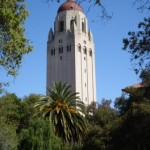 A quick glance at Stanford Graduate School of Business: currently ties in first place (with Harvard Business School) as the best business schools, according to US News & World Report (March 2012). It was ranked #2 for entrepreneurship, for management, for nonprofit management, and #3 for marketing (tied with Duke Fuqua), Production/Operations, and Supply Chain/Logistics.Â
A quick glance at Stanford Graduate School of Business: currently ties in first place (with Harvard Business School) as the best business schools, according to US News & World Report (March 2012). It was ranked #2 for entrepreneurship, for management, for nonprofit management, and #3 for marketing (tied with Duke Fuqua), Production/Operations, and Supply Chain/Logistics.Â
Stanford GSB Class of 2014 Student Profile: Marketing & Consumer Products
6716 people applied to Stanford GSB in 2012; 398 matriculated as new students this fall.
Students admitted this year have an average of 4.2 years of work experience. The average GMAT score for the class of 2014 is 729.
Previous industry experience related to marketing: 8% entered Stanford with industry experience in Consumer Products & Services; Significant other elements of the class worked in industries like media and entertainment or high tech and could also have been working in a marketing capacity, but the statistics don’t reveal previous function.
Stanford Academics Related to Marketing/Consumer Products
The Stanford GSB curriculum, which is based on the “noble calling†of management, is individually tailored according to work experience, background, and career goals. During the first year students choose from a “menu†of required courses (see detailed first year curriculum here) and during the second year students build their own curriculum of electives (see details on the second year curriculum here).
The marketing-related required courses are:
- Data Analysis and Decision Making
- Marketing
- Microeconomics
- Strategy Beyond Markets
Other marketing courses include:
- MKTGÂ 240. Marketing Management
- MKTGÂ 335. Product Launch
- MKTGÂ 344. Marketing Research
- MKTGÂ 353. Social Brands
- MKTGÂ 355. Designing Happiness
- MKTGÂ 365. Marketing Analytics
- MKTGÂ 375. Consumer Behavior
- MKTGÂ 526. Marketing Research for Entrepreneurs
- MKTGÂ 532. Persuasion
- MKTGÂ 536. Entrepreneurial Ventures in Luxury Markets
- MKTGÂ 547. Strategic Marketing Communication
- MKTGÂ 555. Designing Happiness
- MKTGÂ 641. Behavioral Research in Marketing I
- MKTGÂ 642. Behavioral Research in Marketing II: Consumer Behavior
- MKTGÂ 644. Quantitative Research in Marketing
- MKTGÂ 645. Empirical Analysis of Dynamic Decision Contexts
- MKTGÂ 646. Bayesian Inference: Methods and Applications
- MKTGÂ 661. Attitudes and Persuasion
- GSBGENÂ 542. How to Tell a Story. 1 Units
- GSBGENÂ 543. The Power of Stories in Business. 1 Units.
- GSBGENÂ 562. Sports Marketing
Research Centers and Global Opportunities for Marketing at Stanford
All Stanford GSB students are required to fulfill the Global Experience Requirement, which provides GSB students with an experiential learning opportunity to broaden students’ “understanding of the global context of business.â€
Clubs for Stanford Marketing Students
- Travel and Hospitality Club
- Arts, Media and Entertainment (AME)
- Marketing Club
- Real Estate Club
- Retail Club
- Sales Club
- Family Business Club
Marketing Hiring Stats at Stanford GSB
17% of the class of 2011 graduates secured jobs with a marketing function. See details below.
| Function | Percent | Median Base Salary ($) | Median Signing Bonus ($) |
| Brand/Product/Marketing Manager | 8 | 98,000 | 20,000 |
| Business Development | 5 | 115,000 | N/A |
| Product Development Manager | 3 | 112,500 | 35,000 |
| Marketing, Other | 1 | 100,000 | N/A |
For internships, 23% of class of 2012 students obtained marketing positions. Details are as follows:
| Function | Percent | Median Monthly Base Salary ($) |
| Brand/Product/Marketing Manager | 10 | 6,031 |
| Business Development | 7 | 5,406 |
| Product Development Manager | 3 | 6,450 |
| Marketing, Other | 4 | 6,223 |
To see the broad array of companies recruiting at Stanford, please see Recruiting Organizations 2010-2011.
